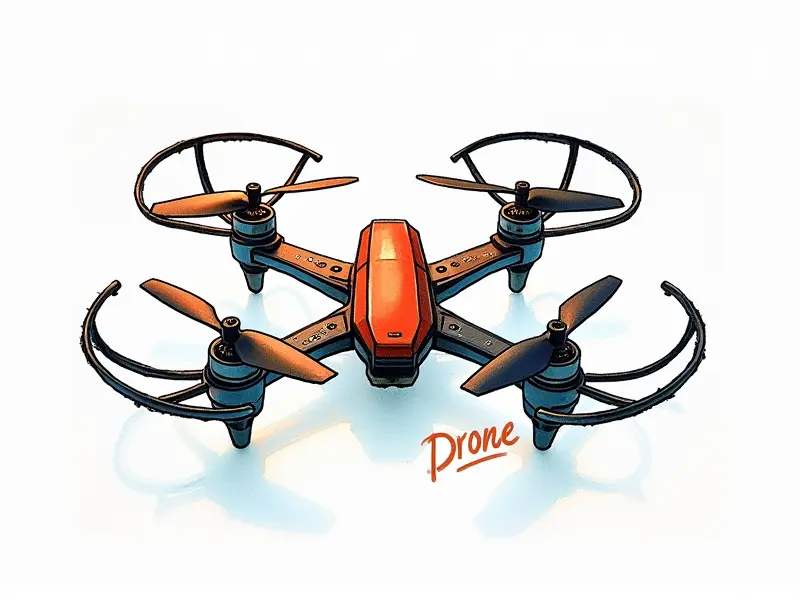How to calibrate a drone

Why and How to Calibrate Your FPV Racing Drone
Calibrating your FPV racing drone is essential for achieving optimal performance. Calibration ensures that all sensors, motors, and control systems are functioning correctly, providing you with the precision and responsiveness needed for competitive flying.
Before diving into calibration steps, it's crucial to understand why this process is necessary:
Essential Steps for RC Quadcopter Calibration
- Initial Setup: Ensure your quadcopter is properly assembled and all components are securely connected.
- Sensor Alignment: Align the gyroscope, accelerometer, and GPS sensors to ensure accurate readings.
- Motor Calibration: Calibrate each motor individually to achieve balanced thrust across all rotors.
Easy Drone Calibration for Optimal Performance
To calibrate your drone effectively, follow these straightforward steps:
- Check Firmware Updates: Ensure that the firmware on your drone is up-to-date to take advantage of the latest features and improvements.
- Leveling: Use a level tool or app to ensure your drone's frame is perfectly horizontal before calibration.
- Trim Settings: Adjust trim settings for each axis (pitch, roll, yaw) to eliminate any inherent imbalance in the quadcopter.
The Importance of Calibrating RC Helicopters
RC helicopters require meticulous calibration due to their complex mechanics and aerodynamics. Proper calibration ensures:
- Balanced Flight: Achieve stable flight by calibrating the tail rotor, main rotor pitch, and cyclic controls.
- Precision Control: Fine-tune control inputs for precise maneuvering during flight.
Achieving Precision: Airplane Drone Calibration
Calibrating an airplane drone involves several key steps to ensure accurate performance and stability:
- Trimming: Adjust the elevator, aileron, and rudder trims for optimal flight characteristics.
- Servo Calibration: Calibrate servos to achieve precise control over each surface of the aircraft.
How to Calibrate Your Drone in 7 Steps
Follow these detailed steps to calibrate your drone effectively:
- Power On: Turn on your drone and connect it to a calibration app or software.
- Sensor Calibration: Calibrate the gyroscope, accelerometer, and GPS sensors according to the manufacturer's instructions.
- Motor Testing: Test each motor individually for proper operation and balance.
- Trim Adjustments: Fine-tune trim settings for pitch, roll, yaw, and throttle.
- Battery Check: Ensure your battery is fully charged before proceeding with calibration.
- Firmware Update: Install any available firmware updates to enhance performance.
- Final Test Flight: Conduct a short test flight to verify that all systems are functioning correctly.
Quick Guide: Calibrating Your Drone
Calibration can be simplified with these quick steps:
- Power On and Connect: Turn on your drone and connect it to a calibration app or software.
- Sensor Alignment: Align the gyroscope, accelerometer, and GPS sensors for accurate readings.
- Motor Balance: Calibrate each motor individually to ensure balanced thrust across all rotors.
Mastering Drone Calibration: A Beginner's Guide
Calibrating a drone can be daunting for beginners, but with these tips, you'll become proficient in no time:
- Understand the Basics: Learn about sensors, motors, and control systems to understand how calibration affects performance.
- Familiarize Yourself with Tools: Get acquainted with calibration apps and tools specific to your drone model.
- Practice Regularly: Calibrate your drone regularly to maintain optimal performance.
Fast Track: Perfect Drone Calibration Techniques
To achieve perfect calibration quickly, follow these advanced techniques:
- Use Professional Tools: Invest in professional-grade tools and software for precise calibration.
- Customize Settings: Customize calibration settings to suit your specific flying style and environment.
The Ultimate Drone Calibration Checklist
Ensure you cover all bases with this comprehensive checklist:
- Sensor Alignment: Calibrate gyroscope, accelerometer, and GPS sensors.
- Motor Balance: Test each motor individually for balanced thrust.
- Trim Adjustments: Fine-tune pitch, roll, yaw, and throttle trims.
- Battery Check: Ensure your battery is fully charged before calibration.
- Firmware Update: Install any available firmware updates.
Top Tricks for Calibrating Your FPV Racing Drone
Here are some expert tips to help you calibrate your FPV racing drone like a pro:
- Use High-Quality Components: Ensure all components, especially sensors and motors, are of high quality.
- Regular Maintenance: Perform regular maintenance checks to keep your drone in top condition.
Conclusion
Calibrating your drone is a crucial step in ensuring optimal performance and safety. By following the steps outlined above, you can achieve precise control and stability during flight. Regular calibration will help maintain peak performance and extend the lifespan of your drone. Whether you're an FPV racer or just starting out with RC drones, mastering the art of calibration will take your flying skills to new heights.

